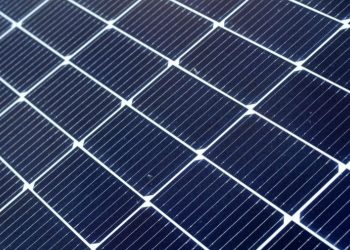AC modules were once considered one of the hottest solar developments within the residential market. These “smart” modules came with microinverters pre-attached and pre-wired, theoretically saving installation time on the roof. In the mid-2010s, there were AC modules on display in nearly every module manufacturer’s booth at tradeshows. Research groups expected the smart panel market (which also includes panels with pre-attached DC optimizers) to become a significant module category, with the global share reaching 1 GW by 2020. Now midway through the 2020s, it’s tough to find an AC module offered anywhere. Where’d they go?
The COVID-19 pandemic wasn’t the death knell to the AC module, but it is a bookend to the specialty panel’s almost-decade of existence within the United States. In 2019, the two main AC module suppliers, Panasonic and LG, released their final AC module series — Panasonic with the Enphase IQ7x microinverter and LG with its own white-labeled microinverter. Both companies made panels for the residential market using the traditional “60-cell” footprint that maxed out at 375 WDC. When Panasonic moved to larger panel sizes in 2021 and LG completely exited solar panel manufacturing in 2022, the AC module seemed to disappear in the United States.
David Lopez, national sales manager for Panasonic Eco Systems of North America, said that his company found success with AC modules because of their all-in-one warranty. Panasonic’s AC modules also had exclusivity rights with Enphase’s IQ7x microinverter, which was difficult to find through distributors otherwise. But after changing module formats and realizing installers used multiple microinverter models for the same solar panel model, trying to make a one-size-fits-all AC module made less sense.
“There hasn’t been any significant resistance from installers regarding our decision to discontinue AC modules, suggesting they aren’t necessarily missing that option,” Lopez said.
Iowa-based ECG Solar prides itself on largely being an ACPV installer, and president Jason Gideon said ECG is a big supporter of Enphase, but the company’s experience with LG made it step away from AC modules specifically. Having one warranty cover the panel and the microinverter is great — until that company goes out of business.
“Getting warranty replacements for LG is difficult. If the module is OK but the inverter is bad, you have to replace the whole thing,” he said. “And then finding panels that fit that former size is hard, so redesigning layouts takes time.”
Gideon said the pre-wiring on AC modules was a real time saver on the ground, but his crews now prefer to place the microinverter on the array’s rails for easier access in O&M situations. Panasonic ultimately found the AC module’s lack of installation flexibility a hindrance to its more widescale adoption.
“Despite the perception that using AC modules would streamline installation and potentially lower costs compared to using separate modules and microinverters, the reality often proved different. Installation could sometimes be more challenging with AC modules due to reduced flexibility in positioning the rails beneath the solar panels and being limited to specific microinverter models,” Lopez said.
The decline in AC modules in the United States is not a blow to the microinverter market. Enphase is currently the most quoted inverter brand in the United States, holding somewhere around 70% of the market, according to EnergySage. ACPV installations are still alive and well; they’re just not grounded in AC module design.
“Using AC solar modules is a business decision for installers. AC modules can offer a 20 to 40% reduction in installation time relative to similar installs without the integration,” said an Enphase spokesperson in an email to Solar Power World. “[Some] businesses may want the flexibility of installing a microinverter but want to be able to switch panels. It depends on the business models.”
Not everyone is giving up on AC modules though. Qcells announced last year that its AC SMART System, composed of AC modules and an energy storage system, would be available to the North American market in late 2024. And Enphase hasn’t stopped making AC module partnerships — the company’s microinverters are part of SunPower’s Equinox system in the United States. When Maxeon took over SunPower panel manufacturing in 2020, Maxeon brought the Enphase-paired AC module to the global market. Although Maxeon is not currently advertising the AC module to U.S. customers, the company sells the specialty product in Australia, Europe, the Middle East and Africa.
Silicon Valley-based microinverter company Northern Electric Power (NEP) isn’t against AC module designs either. Its BDM 400 microinverter is purpose-built for AC module setups, with a thinner design and mounting holes within its case for easier attachment to a panel’s frame. NEP is currently supplying its microinverter to startup Solvari for its AC module that should enter production this year.
It’s not quite a comeback, but the AC module seems unwilling to enter retirement. Perhaps 2024 will be a transformative year for the specialty product.





















